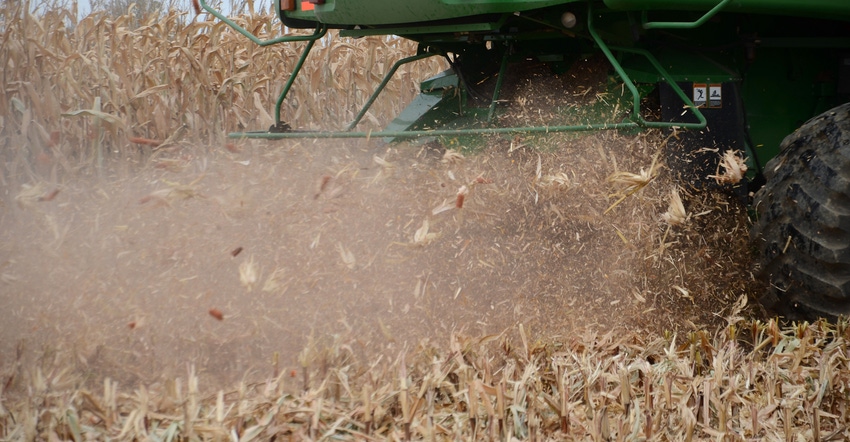
If you’re in the field watching the combine run, what do you look for? Where do you look — in front, at the side or behind?
There are key lessons to be learned anytime you’re in the field. Dave Nanda, director of genetics for Seed Genetics Direct, sponsor of Corn Watch’ 22, says that’s true during the season before it’s time for the combine.
Related: Mold, sprouting become field-by-field issues
But Nanda adds that there are also things to learn at harvest. Not all lessons come through the yield monitor. Some are best learned watching the machine at a distance, or examining the residue left behind.
Here are two prime examples:
Spreading residue evenly. The operator set the combine to chop residue and spread it as evenly as possible. Standing a safe distance to the rear, it was easy to see the storm of finely chopped residue coming from the machine and being distributed across the combine pass. In this case, because the combine was equipped with a 12-row corn head, it was a wide pass. Making sure the combine is set up to handle the task and spread residue as far as necessary is a task this operator accomplished before the season began.
Tony Bailey, Indiana state conservation agronomist with the Natural Resources Conservation Service, penned an article earlier detailing step-by-step how it’s important to make sure you achieve even residue spread after both corn and soybeans. He explained that you’re establishing your seedbed if you’re in no-till.
Bailey noted that spreading residue evenly across the width of the head sets the stage for more uniform warming of soils in the spring. If some areas have residue but others do not, some areas will warm up and dry out quicker than others. If you want a uniform seedbed in the spring, it’s critical to obtain even residue spread in the fall. This grower will no-till soybeans into these cornstalks next spring.
Harvest losses. Someone following the combine can put more dollars in the farm’s coffers by looking down occasionally as they walk, instead of just looking straight ahead. If you look down, you notice if corn kernels are left on the ground.
Note the single, bright orange kernel lying atop the residue in the photo below. The question is, how many more kernels are underneath residue?

Dan Quinn, Purdue Extension corn specialist, points to data indicating that 2 kernels per square foot equals 1 bushel of loss per acre. Specialists say it’s worth your time, even if you are the one combining, to stop occasionally and check these harvest losses. To make it simpler, carry a 10-square-foot rectangular frame made of PVC pipe, wire or light wood. With a 10-square-foot space, 20 kernels found inside equals 1 bushel per acre of loss. Each large ear found whole in 75 linear feet also equals 1 bushel of loss.
About the Author(s)
You May Also Like




